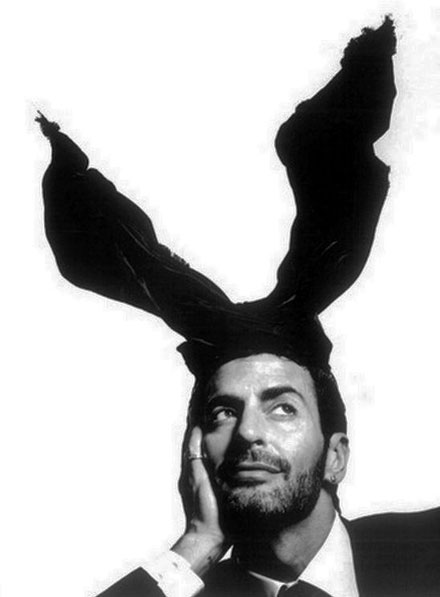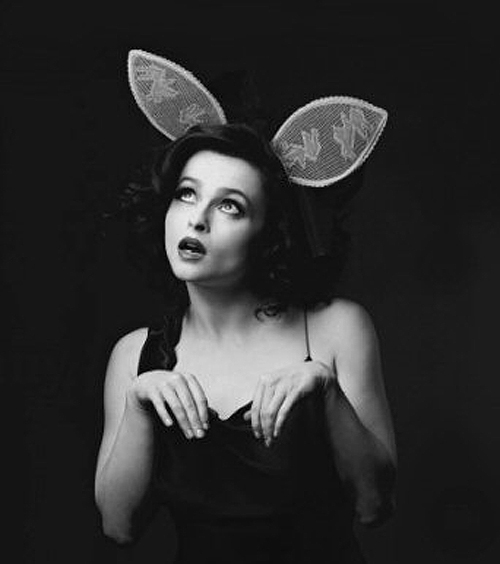 Marilyn Monroe and Truman Capote dancing at The Morocco, 1955
Marilyn Monroe and Truman Capote dancing at The Morocco, 1955
A.K.A: Abbess in High-heeled Shoes
Short story written by Truman Capote
From Music for Chamaleons
April 28, 1955
Scene: The chapel of the Universal funeral home at Lexington Avenue and 52nd Street, New York City. An interesting galaxy packs the pews: celebrities, for the most part, from an international arena of theater, films, literature, all present in tribute to Constance Collier, the English-born actress who had died three days before at age 75.
Born in 1880, Miss Collier had begun her career as a music-hall Gaiety Girl, graduated from that to become one of England’s principal Shakespearean actresses (and the fiancée of Sir Max Beerbohm, whom she never married, and perhaps for that reason was the inspiration for the mischievously unobtainable heroine in Sir Max’s novel Zuleika Dobson). Eventually she emigrated to the United States, where she established herself as a considerable figure on the New York stage as well as in Hollywood films. During the last decades of her life she lived in New York, where she practiced as a drama coach of unique caliber; she accepted only professionals as students, and usually only professionals who were already “stars”—Katharine Hepburn was a permanent pupil; another Hepburn, Audrey, was also a Collier protégée, as were Vivien Leigh and, for a few months prior to her death, a neophyte Miss Collier referred to as “my special problem,” Marilyn Monroe.
Marilyn Monroe, whom I’d met when John Huston was directing her in The Asphalt Jungle, one of her first speaking roles, had come under Miss Collier’s wing at my suggestion. I had known Miss Collier perhaps a half-dozen years and admired her as a woman of true stature, physically, emotionally, creatively; and, for all her commanding manner, her grand cathedral voice, as an adorable person, mildly wicked but exceedingly warm, dignified yet Gemütlich. I loved to go to the frequent small lunch parties she gave in her dark Victorian studio in mid-Manhattan; she had a barrel of yarns to tell about her adventures as a leading lady opposite Sir Beerbohm Tree [Max’s half-brother] and the great French actor Coquelin, her involvements with Oscar Wilde, the youthful Chaplin, and Garbo in the silent Swede’s formative days. Indeed Miss Collier was a delight, as was her devoted secretary and companion, Phyllis Wilbourn, a quietly twinkling maiden lady who, after her employer’s demise, became the companion of Katharine Hepburn. Miss Collier introduced me to many people who became friends: the Lunts, the Oliviers, and especially Aldous Huxley. But it was I who introduced her to Marilyn Monroe, and at first it was not an acquaintance she was too keen to acquire: her eyesight was faulty, she had seen none of Marilyn’s movies, and really knew nothing about her except that she was some sort of platinum sex-explosion who had achieved global notoriety; in short, she seemed hardly suitable clay for Miss Collier’s stern classic shaping. But I thought they might make a stimulating combination.
They did. “Oh yes,” Miss Collier reported to me, “there is something there. She is a beautiful child. I don’t mean that in the obvious way—the perhaps too obvious way. I don’t think she’s an actress at all, not in any traditional sense. What she has—this presence, this luminosity, this flickering intelligence—could never surface on the stage. It’s so fragile and subtle, it can only be caught by the camera. It’s like a hummingbird in flight: only a camera can freeze the poetry of it. But anyone who thinks this girl is simply another Harlow or harlot or whatever is mad. Speaking of mad, that’s what we’ve been working on together: Ophelia. I suppose people would chuckle at the notion, but really, she could be the most exquisite Ophelia. I was talking to Greta last week, and I told her about Marilyn’s Ophelia, and Greta said yes, she could believe that because she had seen two of her films, very bad and vulgar stuff, but nevertheless she had glimpsed Marilyn’s possibilities. Actually, Greta has an amusing idea. You know that she wants to make a film of Dorian Gray? With her playing Dorian, of course. Well, she said she would like to have Marilyn opposite her as one of the girls Dorian seduces and destroys. Greta! So unused! Such a gift—and rather like Marilyn’s, if you consider it. Of course, Greta is a consummate artist, an artist of the utmost control. This beautiful child is without any concept of discipline or sacrifice. Somehow I don’t think she’ll make old bones. Absurd of me to say, but somehow I feel she’ll go young. I hope, I really pray, that she survives long enough to free the strange lovely talent that’s wandering through her like a jailed spirit.”
But now Miss Collier had died, and here I was loitering in the vestibule of the Universal Chapel waiting for Marilyn. We had talked on the telephone the evening before, and agreed to sit together at the services, which were scheduled to start at noon. She was now a half-hour late; she was always late, but I’d thought just for once! For God’s sake, goddamnit! Then suddenly there she was, and I didn’t recognize her until she said…
Marilyn: Oh, baby, I’m so sorry. But see, I got all made up, and then I decided maybe I shouldn’t wear eyelashes or lipstick or anything, so then I had to wash all that off, and I couldn’t imagine what to wear…
(What she had imagined to wear would have been appropriate for the abbess of a nunnery in private audience with the Pope. Her hair was entirely concealed by a black chiffon scarf; her black dress was loose and long and looked somehow borrowed; black silk stockings dulled the blond sheen of her slender legs. An abbess, one can be certain, would not have donned the vaguely erotic black high-heeled shoes she had chosen, or the owlish black sunglasses that dramatized the vanilla-pallor of her dairy-fresh skin.)
TC: You look fine.
Marilyn (gnawing an already chewed-to-the-nub thumbnail): Are you sure? I mean, I’m so jumpy. Where’s the john? If I could just pop in there for a minute—
TC: And pop a pill? No! Shhh. That’s Cyril Ritchard’s voice: he’s started the eulogy.
(Tiptoeing, we entered the crowded chapel and wedged ourselves into a narrow space in the last row. Cyril Ritchard finished; he was followed by Cathleen Nesbitt, a lifelong colleague of Miss Collier’s, and finally Brian Aherne addressed the mourners. Through it all, my date periodically removed her spectacles to scoop up tears bubbling from her blue-grey eyes. I’d sometimes seen her without makeup, but today she presented a new visual experience, a face I’d not observed before, and at first I couldn’t perceive why this should be. Ah! It was because of the obscuring head scarf. With her tresses invisible, and her complexion cleared of all cosmetics, she looked 12 years old, a pubescent virgin who has just been admitted to an orphanage and is grieving over her plight. At last the ceremony ended, and the congregation began to disperse.)
Marilyn: Please, let’s sit here. Let’s wait till everyone’s left.
TC: Why?
Marilyn: I don’t want to have to talk to anybody. I never know what to say.
TC: Then you sit here, and I’ll wait outside. I’ve got to have a cigarette.
Marilyn: You can’t leave me alone! My God! Smoke here.
TC: Very funny. Come on, let’s go.
Marilyn: Please. There’s a lot of shutter-bugs downstairs. And I certainly don’t want them taking my picture looking like this.
TC: I can’t blame you for that.
Marilyn: You said I looked fine.
TC: You do. Just perfect—if you were playing the Bride of Frankenstein.
Marilyn: Now you’re laughing at me.
TC: Do I look like I’m laughing?
Marilyn: You’re laughing inside. And that’s the worst kind of laugh. (Frowning; nibbling thumbnail) Actually, I could’ve worn makeup. I see all these other people are wearing makeup.
TC: I am. Globs.
Marilyn: Seriously, though. It’s my hair. I need color. And I didn’t have time to get any. It was all so unexpected, Miss Collier dying and all. See?
(She lifted her kerchief slightly to display a fringe of darkness where her hair parted.)
TC: Poor innocent me. And all this time I thought you were a bona fide blonde.
Marilyn: I am. But nobody’s that natural.
TC: Okay, everybody’s cleared out. So up, up.
Marilyn: Those photographers are still down there. I know it.
TC: If they didn’t recognize you coming in, they won’t recognize you going out.
Marilyn: One of them did. But I’d slipped through the door before he started yelling.
TC: I’m sure there’s a back entrance. We can go out that way.
Marilyn: I don’t want to see any corpses.
TC: Why would we?
Marilyn: This is a funeral parlor. They must keep them somewhere. That’s all I need today, to wander into a room full of corpses. Be patient. I’ll take us somewhere and treat us to a bottle of bubbly.
So we sat and talked and Marilyn said: “I hate funerals. I’m glad I won’t have to go to my own. Only, I don’t want a funeral—just my ashes cast on waves by one of my kids, if I ever have any. I wouldn’t have come today except Miss Collier cared about me, my welfare, and she was just like a granny, a tough old granny, but she taught me a lot. She taught me how to breathe. I’ve put it to good use, too, and I don’t mean just acting. There are other times when breathing is a problem. But when I first heard about it, Miss Collier cooling, the first thing I thought was: Oh, gosh, what’s going to happen to Phyllis?! Her whole life was Miss Collier. But I hear she’s going to live with Miss Hepburn. Lucky Phyllis; she’s going to have fun now. I’d change places with her pronto. Miss Hepburn is a terrific lady, no shit. I wish she was my friend. So I could call her up sometimes and…well, I don’t know, just call her up.”
We talked about how much we liked New York and loathed Los Angeles (“Even though I was born there, I still can’t think of one good thing to say about it. If I close my eyes, and picture L.A., all I see is one big varicose vein”); we talked about actors and acting (“Everybody says I can’t act. They said the same thing about Elizabeth Taylor. And they were wrong. She was great in A Place in the Sun. I’ll never get the right part, anything I really want. My looks are against me. They’re too specific”); we talked some more about Elizabeth Taylor, and she wanted to know if I knew her, and I said yes, and she said well, what is she like, what is she really like, and I said well, she’s a bit like you, she wears her heart on her sleeve and talks salty, and Marilyn said f—you and said well, if somebody asked me what Marilyn Monroe was like, what was Marilyn Monroe really like, what would I say, and I said I’d have to think about that.
TC: Now do you think we can get the hell out of here? You promised me champagne, remember?
Marilyn: I remember. But I don’t have any money.
TC: You’re always late and you never have any money. By any chance are you under the delusion that you’re Queen Elizabeth?
Marilyn: Who?
TC: Queen Elizabeth. The Queen of England.
Marilyn (frowning): What’s that cunt got to do with it?
TC: Queen Elizabeth never carries money either. She’s not allowed to. Filthy lucre must not stain the royal palm. It’s a law or something.
Marilyn: I wish they’d pass a law like that for me.
TC: Keep going the way you are and maybe they will.
Marilyn: Well, gosh. How does she pay for anything? Like when she goes shopping.
TC: Her lady-in-waiting trots along with a bag full of farthings.
Marilyn: You know what? I’ll bet she gets everything free. In return for endorsements.
TC: Very possible. I wouldn’t be a bit surprised. By Appointment to Her Majesty. Corgi dogs. All those Fortnum & Mason goodies. Pot. Condoms.
Marilyn: What would she want with condoms?
TC: Not her, dopey. For that chump who walks two steps behind, Prince Philip.
Marilyn: Him. Oh, yeah. He’s cute. He looks like he might have a nice prick. Did I ever tell you about the time I saw Errol Flynn whip out his prick and play the piano with it? Oh well, it was a hundred years ago, I’d just got into modeling, and I went to this half-ass party, and Errol Flynn, so pleased with himself, he was there and he took out his prick and played the piano with it. Thumped the keys. He played You Are My Sunshine. Christ! Everybody says Milton Berle has the biggest schlong in Hollywood. But who cares? Look, don’t you have any money?
TC: Maybe about fifty bucks.
Marilyn: Well, that ought to buy us some bubbly.
(Outside, Lexington Avenue was empty of all but harmless pedestrians. It was around two, and as nice an April afternoon as one could wish: ideal strolling weather. So we moseyed toward Third Avenue. A few gawkers spun their heads, not because they recognized Marilyn as the Marilyn, but because of her funereal finery; she giggled her special little giggle, a sound as tempting as the jingling bells on a Good Humor wagon, and said: “Maybe I should always dress this way. Real anonymous.”)
(As we neared P.J. Clarke’s saloon, I suggested P.J.’s might be a good place to refresh ourselves, but she vetoed that: “It’s full of those advertising creeps. And that bitch Dorothy Kilgallen, she’s always in there getting bombed. What is it with these micks? The way they booze, they’re worse than Indians.”)
(I felt called upon to defend Kilgallen, who was a friend, somewhat, and I allowed as to how she could upon occasion be a clever funny woman. She said: “Be that as it may, she’s written some bitchy stuff about me. But all those types hate me. Hedda. Louella. I know you’re supposed to get used to it, but I just can’t. It really hurts. What did I ever do to those hags? The only one who writes a decent word about me is Sidney Skolsky. But he’s a guy. The guys treat me okay. Just like maybe I was a human person. At least they give me the benefit of the doubt. And Bob Thomas is a gentleman. And Jack O’Brian.”)
(We looked in the windows of antique shops; one contained a tray of old rings, and Marilyn said: “That’s pretty. The garnet with the seed pearls. I wish I could wear rings, but I hate people to notice my hands. They’re too fat. Elizabeth Taylor has fat hands. But with those eyes, who’s looking at her hands?”)
(Another window displayed a handsome grandfather clock, which prompted her to observe: “I’ve never had a home. Not a real one with all my own furniture. But if I ever get married again, and make a lot of money, I’m going to hire a couple of trucks and ride down Third Avenue buying every damn kind of crazy thing. I’m going to get a dozen grandfather clocks and line them all up in one room and have them all ticking away at the same time. That would be real homey, don’t you think?”)
Marilyn: Hey! Across the street!
TC: What?
Marilyn: See the sign with the palm? That must be a fortune-telling parlor.
TC: Are you in the mood for that?
Marilyn: Well, let’s take a look.


 Palmistry photoshoot. Milton Greene. Arizona, 1956
Palmistry photoshoot. Milton Greene. Arizona, 1956
(It was not an inviting establishment. Through a smeared window we could discern a barren room with a skinny, hairy gypsy lady seated in a canvas chair under a hellfire-red ceiling lamp that shed a torturous glow; she was knitting a pair of baby booties, and did not return our stares. Nevertheless, Marilyn started to go in, then changed her mind.)
Marilyn: Sometimes I want to know what’s going to happen. Then I think it’s better not to. There’s two things I’d like to know, though. One is whether I’m going to lose weight.
TC: And the other?
Marilyn: That’s a secret.
TC: Now, now. We can’t have any secrets today. Today is a day of sorrow, and sorrowers share their innermost thoughts.
Marilyn: Well, it’s a man. There’s something I’d like to know. But that’s all I’m going to tell. It really is a secret.
(And I thought: That’s what you think; I’ll get it out of you.)
TC: I’m ready to buy that champagne.
(We wound up on Second Avenue in a gaudily decorated, deserted Chinese restaurant. But it did have a well-stocked bar, and we ordered a bottle of Mumm’s; it arrived unchilled, and without a bucket, so we drank it out of tall glasses with ice cubes.)
Marilyn: This is fun. Kind of like being on location—if you like location. Which I most certainly don’t. Niagara. That stinker. Yuk.
TC: So let’s hear about your secret lover.
Marilyn: (Silence)
TC: (Silence)
Marilyn: (Giggles)
TC: (Silence)
Marilyn: You know so many women. Who’s the most attractive woman you know?
TC: No contest. Barbara Paley. Hands down.
Marilyn (frowning): Is that the one they call “Babe”? She sure doesn’t look like any Babe to me. I’ve seen her in Vogue and all. She’s so elegant. Lovely. Just looking at her pictures makes me feel like pig-slop.
TC: She might be amused to hear that. She’s very jealous of you.
Marilyn: Jealous of me? Now there you go again, laughing.
TC: Not at all. She is jealous.
Marilyn: But why?
TC: Because one of the columnists, Kilgallen I think, ran a blind item that said something like: “Rumor hath it that Mrs. DiMaggio rendezvoused with television’s toppest tycoon and it wasn’t to discuss business.” Well, she read the item and she believes it.
Marilyn: Believes what?
TC: That her husband is having an affair with you. William S. Paley. TV’s toppest tycoon. He’s partial to shapely blondes. Brunettes, too.
Marilyn: But that’s batty. I’ve never met the guy.
TC: Ah, come on. You can level with me. This secret lover of yours—it’s William S. Paley, n’est-ce pas?
Marilyn: No! It’s a writer. He’s a writer.
TC: That’s more like it. Now we’re getting somewhere. So your lover is a writer. Must be a real hack, or you wouldn’t be ashamed to tell me his name.
Marilyn (furious, frantic): What does the “S” stand for?
TC: “S.” What “S”?
Marilyn: The “S” in William S. Paley.
TC: Oh, that “S.” It doesn’t stand for anything. He sort of tossed it in there for appearance sake.
Marilyn: It’s just an initial with no name behind it? My goodness. Mr. Paley must be a little insecure.
TC: He twitches a lot. But let’s get back to our mysterious scribe.
Marilyn: Stop it! You don’t understand. I have so much to lose.
TC: Waiter, we’ll have another Mumm’s, please.
Marilyn: Are you trying to loosen my tongue?
TC: Yes. Tell you what. We’ll make an exchange. I’ll tell you a story, and if you think it’s interesting, then perhaps we can discuss your writer friend.
Marilyn (tempted, but reluctant): What’s your story about?
TC: Errol Flynn.
Marilyn: (Silence)
TC: (Silence)
Marilyn (hating herself): Well, go on.
TC: Errol and I once spent a cozy evening together. If you follow me.
Marilyn: You’re making this up. You’re trying to trick me.
TC: Scout’s honor. I’m dealing from a clean deck. (Silence; but I can see that she’s hooked, so after lighting a cigarette…) Well, this happened when I was 18. Nineteen. It was during the war. The winter of 1943. That night Carol Marcus, or maybe she was already Carol Saroyan, was giving a party for her best friend, Gloria Vanderbilt. She gave it in her mother’s apartment on Park Avenue. Big party. About 50 people. Around midnight Errol Flynn rolls in with his alter ego, a swashbuckling playboy named Freddie McEvoy. They were both pretty loaded. Anyway, Errol started yakking with me, and he was bright, we were making each other laugh, and suddenly he said he wanted to go to El Morocco, and did I want to go with him and his buddy McEvoy. I said okay, but then McEvoy didn’t want to leave the party and all those debutantes, so in the end Errol and I left alone. Only we didn’t go to El Morocco. We took a taxi down to Gramercy Park, where I had a little one-room apartment. He stayed until noon the next day.
Marilyn: And how would you rate it? On a scale of one to ten.
TC: Frankly, if it hadn’t been Errol Flynn, I don’t think I would have remembered it.
Marilyn: That’s not much of a story. Not worth mine—not by a long shot.
TC: Waiter, where is our champagne? You’ve got two thirsty people here.
Marilyn: And it’s not as if you’d told me anything new. I’ve always known Errol zigzagged. I have a masseur, he’s practically my sister, and he was Tyrone Power’s masseur, and he told me all about the thing Errol and Ty Power had going. No, you’ll have to do better than that.
TC: You drive a hard bargain.
Marilyn: I’m listening. So let’s hear your best experience. Along those lines.
TC: The best? The most memorable? Suppose you answer the question first.
Marilyn: And I drive hard bargains! Ha! (Swallowing champagne) Joe’s not bad. He can hit home runs. If that’s all it takes, we’d still be married. I still love him, though. He’s genuine.
TC: Husbands don’t count. Not in this game.
Marilyn (nibbling nail; really thinking): Well, I met a man, a stockbroker and nothing much to look at—65, and he wears those very thick glasses. Thick as jellyfish. I can’t say what it was, but—
TC: You can stop right there. I’ve heard all about him from other girls. He’s supposed to be sensational.
Marilyn: He is. Okay, smart-ass. Your turn.
TC: Forget it. I don’t have to tell you damn nothing. Because I know who your masked marvel is: Arthur Miller. (She lowered her black glasses: Oh boy, if looks could kill, wow!) I guessed as soon as you said he was a writer.
Marilyn (stammering): But how? I mean, nobody… hardly anybody—
TC: At least three, maybe four years ago Irving Drutman—
Marilyn: Irving who?
TC: Drutman. He’s a writer on the Herald Tribune. He told me you were fooling around with Arthur Miller. Had a hang-up on him. I was too much of a gentleman to mention it before.
Marilyn: Gentleman! You bastard. (Stammering again, but dark glasses in place) You don’t understand. That was long ago. That ended. But this is new. It’s all different now, and—
TC: Just don’t forget to invite me to the wedding.
Marilyn: If you talk about this, I’ll murder you. I’ll have you bumped off. I know a couple of men who’d gladly do me the favor.
TC: I don’t question that for an instant.
(At last the waiter returned with the second bottle.)
Marilyn: Tell him to take it back. I don’t want any. I want to get the hell out of here.
TC: Sorry if I’ve upset you.
Marilyn: I’m not upset.
(But she was. While I paid the check, she left for the powder room, and I wished I had a book to read: her visits to powder rooms sometimes lasted as long as an elephant’s pregnancy. Idly, as time ticked by, I wondered if she was popping uppers or downers. Downers, no doubt. There was a newspaper on the bar, and I picked it up; it was written in Chinese. After 20 minutes had passed, I decided to investigate. Maybe she’d popped a lethal dose, or even cut her wrists. I found the ladies’ room, and knocked on the door. She said: “Come in.” Inside, she was confronting a dimly lit mirror. I said: “What are you doing?” She said: “Looking at Her.” In fact, she was coloring her lips with ruby lipstick. Also, she had removed the somber head scarf and combed out her glossy, fine-as-cotton-candy hair.)
Marilyn: I hope you have enough money left.
TC: That depends. Not enough to buy pearls, if that’s your idea of making amends.
Marilyn (giggling, returned to good spirits. I decided I wouldn’t mention Arthur Miller again): No. Only enough for a long taxi ride.
TC: Where are we going—Hollywood?
Marilyn: Hell, no. A place I like. You’ll find out when we get there.
(I didn’t have to wait that long, for as soon as we had flagged a taxi, I heard her instruct the cabby to drive to the South Street pier, and I thought: Isn’t that where one takes the ferry to Staten Island? And my next conjecture was: She’s swallowed pills on top of that champagne and now she’s off her rocker.)
TC: I hope we’re not going on any boat rides. I didn’t pack my Dramamine.
Marilyn (happy, giggling): Just the pier.
TC: May I ask why?
Marilyn: I like it there. It smells foreign, and I can feed the seagulls.
TC: With what? You haven’t anything to feed them.
Marilyn: Yes, I do. My purse is full of fortune cookies. I swiped them from that restaurant.
TC (kidding her): Uh-huh. While you were in the John I cracked one open. The slip inside was a dirty joke.
Marilyn: Gosh. Dirty fortune cookies?
TC: I’m sure the gulls won’t mind.
(Our route carried us through the Bowery. Tiny pawnshops and blood-donor stations and dormitories with 50-cent cots and tiny, grim hotels with dollar beds and bars for whites, bars for blacks, everywhere bums, bums, young, far from young, ancient, bums squatting curbside, squatting amid shattered glass and pukey debris, bums slanting in doorways and huddled like penguins at street corners. Once, when we paused for a red light, a purple-nosed scarecrow weaved toward us and began swabbing the taxi’s windshield with a wet rag clutched in a shaking hand. Our protesting driver shouted Italian obscenities.)
Marilyn: What is it? What’s happening?
TC: He wants a tip for cleaning the window.
Marilyn (shielding her face with her purse): How horrible! I can’t stand it. Give him something. Hurry. Please!
(But the taxi had already zoomed ahead, damn near knocking down the old lush. Marilyn was crying.) I’m sick.
TC: You want to go home?
Marilyn: Everything’s ruined.
TC: I’ll take you home.
Marilyn: Give me a minute. I’ll be okay.
(Thus we traveled on to South Street, and indeed the sight of a ferry moored there, with the Brooklyn skyline across the water and careening, cavorting seagulls white against a marine horizon streaked with thin fleecy clouds fragile as lace—this tableau soon soothed her soul.
(As we got out of the taxi we saw a man with a chow on a leash, a prospective passenger, walking toward the ferry, and as we passed them, my companion stopped to pat the dog’s head.)
The Man (firm, but not unfriendly): You shouldn’t touch strange dogs. Especially chows. They might bite you.
Marilyn: Dogs never bite me. Just humans. What’s his name?
The Man: Fu Manchu.
Marilyn (giggling): Oh, just like the movie. That’s cute.
The Man: What’s yours?
Marilyn: My name? Marilyn.
The Man: That’s what I thought. My wife will never believe me. Can I have your autograph?
(He produced a business card and a pen; using her purse to write on, she wrote: God Bless You—Marilyn Monroe.)
Marilyn: Thank you.
The Man: Thank you. Wait’ll I show this back at the office.
(We continued to the edge of the pier, and listened to the water sloshing against it.)
Marilyn: I used to ask for autographs. Sometimes I still do. Last year Clark Gable was sitting next to me in Chasen’s, and I asked him to sign my napkin.
(Leaning against a mooring stanchion, she presented a profile: Galatea surveying unconquered distances. Breezes fluffed her hair, and her head turned toward me with an ethereal ease, as though a breeze had swiveled it.)
TC: So when do we feed the birds? I’m hungry, too. It’s late, and we never had lunch.
Marilyn: Remember, I said if anybody ever asked you what I was like, what Marilyn Monroe was really like—well, how would you answer them? (Her tone was teaseful, mocking, yet earnest, too: she wanted an honest reply.) I bet you’d tell them I was a slob. A banana split.
TC: Of course. But I’d also say…
(The light was leaving. She seemed to fade with it, blend with the sky and clouds, recede beyond them. I wanted to lift my voice louder than the seagulls’ cries and call her back: Marilyn! Marilyn, why did everything have to turn out the way it did? Why does life have to be so rotten?)
TC: I’d say…
Marilyn: I can’t hear you.
TC: I’d say you are a beautiful child.
 Piazza di Spagna in an 18th-century etching by Giovanni Battista Piranesi, seen from south. The street on the left is Via del Babuino, leading to Piazza del Popolo.
Piazza di Spagna in an 18th-century etching by Giovanni Battista Piranesi, seen from south. The street on the left is Via del Babuino, leading to Piazza del Popolo. In the piazza, at the corner on the right as one begins to climb the steps, is the house where English poet John Keats lived and died in 1821; it is now a museum dedicated to his memory, full of memorabilia of the English Romantic generation.
In the piazza, at the corner on the right as one begins to climb the steps, is the house where English poet John Keats lived and died in 1821; it is now a museum dedicated to his memory, full of memorabilia of the English Romantic generation.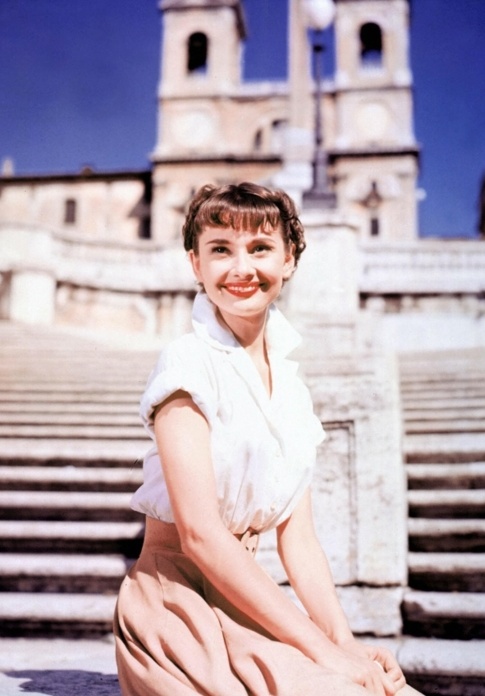 The film Roman Holiday (William Wyler, 1953), starring Audrey Hepburn and Gregory Peck, made the Spanish Steps famous to an American audience
The film Roman Holiday (William Wyler, 1953), starring Audrey Hepburn and Gregory Peck, made the Spanish Steps famous to an American audience The apartment that was the setting for The Roman Spring of Mrs. Stone (José Quintero, 1961) is halfway up on the right
The apartment that was the setting for The Roman Spring of Mrs. Stone (José Quintero, 1961) is halfway up on the right
 The Steps were featured prominently in the film version of The Talented Mr. Ripley(Anthony Minghella, 1999) starring Matt Damon in the title role
The Steps were featured prominently in the film version of The Talented Mr. Ripley(Anthony Minghella, 1999) starring Matt Damon in the title role
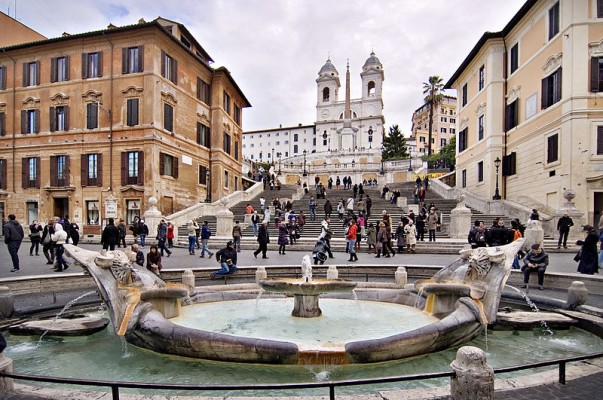







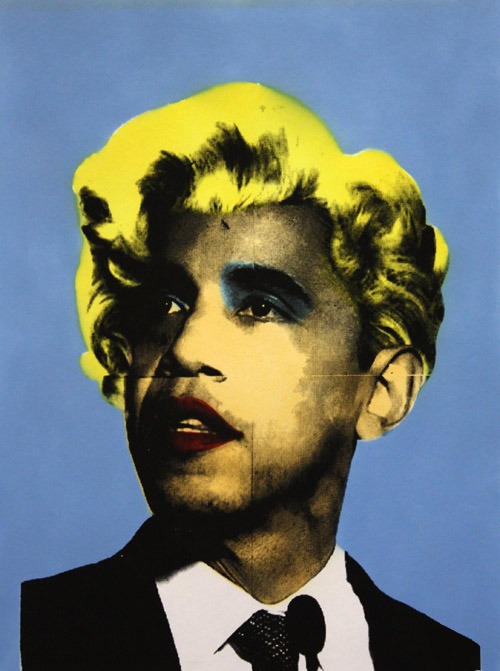
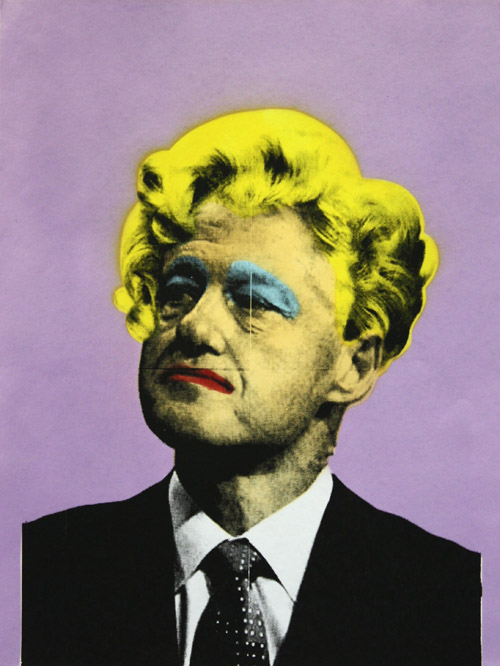


















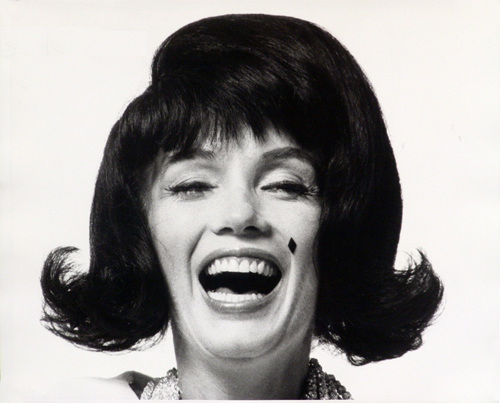
























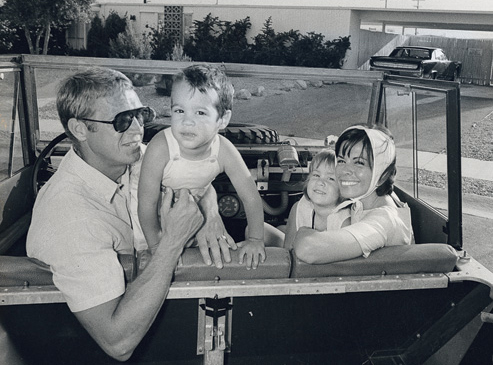

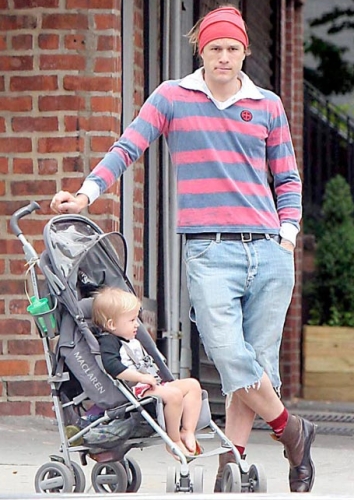








 Elsa Peretti in a Halston-designed Bunny costume, photographed by Helmut Newton in New York City, 1975
Elsa Peretti in a Halston-designed Bunny costume, photographed by Helmut Newton in New York City, 1975 
 Playboy-inspired logo bathing suit
Playboy-inspired logo bathing suit





